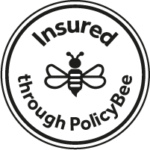In 2024, no one needs a special introduction to what is Software as a Service (SaaS), we live in an era of subscription based businesses from monthly food boxes to TV on demand. As with every emerging business model, SaaS has evolved in its popularity and complexity in the last decade. We have newer accounting standards and more robust practices and KPIs to follow that SMEs in the sector can rely on. To cater to this ever complex landscape, we have made sure that our SaaS accounting offering have kept pace.
What is SaaS accounting and how does it differ from regular accounting?
SaaS businesses have subscription models and this introduces unique accounting challenges compared to traditional businesses. The fundamental principles of SaaS accounting is the same as in any other business – we need revenue recognition, expense recording and balance sheet management just like other businesses. However, the advent of the subscription economy means that we need greater control and process around each of these areas.
Key Components of SaaS Accounting
Fundamentally, SaaS accounting has to follow the accrual method of accounting and not the cash method. Accrual means revenue is recognised when an invoice is raised (i.e. the point of commencement of a service period) and for expenses, when a particular spend has been committed. So the point of occurrence of an event is the important timing here, not the actual point of cash receipt or payment.
SaaS Accounting 101Revenue Recognition:
- Subscription Revenue: SaaS companies receive subscription fees monthly, quarterly, or annually. Revenue must be recognised over a service period, not when payment is received. That means when an invoice is raised for a period of time, divide that across the period that service is expected to be delivered. This becomes very tricky for smaller invoices that go out to many subscribers. Different companies use differed methods to demarcate revenue over periods. It’s very important to have the method used documented and consistently applied. For SaaS accounting, the standards do require disclosures around revenue recognition principles and a cookie cutter write-up in your compliance or audit reports wouldn’t suffice.
- Deferred Revenue: Closely aligned to revenue recognition, is deferred revenue. Payments received in advance are recorded as deferred revenue and recognized over time as the service is provided. In some software such as Xero, the standard Chart of Account item that represents deferred revenue is the “Income in Advance” account. For SaaS accounting, the concept of a “Service Period” is very relevant. This could be a “Service Month”, a “Service Quarter” or a “Service Year”. Whatever it maybe, the invoice period would run from one period to another. As an example, a contract is signed on the 15th of August for a monthly subscription; so a “Service Month” is described as 15th August to 14th September. This does not correspond with the close of a month, a quarter or the end of a financial year. So a portion of the revenue i.e. the revenue for 1 September to 14th September falls to the month of September rather than August. This portion should be “deferred” to be recognised as revenue for the next month. This is a complex accounting practise and people with no experience in this, will struggle to adopt the right practices to ensure any deferment is treated accurately.
Expense Recognition:
- Organising your Chart of Accounts (COA) : SaaS being fundamentally different from a manufacturing company as an example, needs a good look at their chart of accounts and account coding. While this is important for revenue heads, it’s critical for expenses as margin level differences for gross and net profits can show up differently based on how and where expenses sit on a reporting template. Fundamentally, that drills down to the composition of your chart of accounts. Designating all expense heads as “Operational expenses” won’t work. At Evalua8, we cascade account heads to flow top down, so the expenses that directly affect revenue goes under “Cost of Sales” ; these are direct costs for a SaaS business. Then we have people costs – everything attributable to personnel and HR costs, sales and marketing costs and an overarching catch-all, operational expenses section. While you can differentiate more minutely, this basic set up helps to quickly see expenses that go into different sections of a report.
- Matching principle and prepayments : As mentioned under revenue, the expenses incurred by a SaaS company should match the revenue made and attributable to the same period. While most expenses are cyclical and repetitive such as salaries and rent, there would be expenses that span a period of time. Just like you would defer revenue you would also push expenses not belonging to a certain accounting period forward to the next. It’s common to see some expenses like Hubspot or other subscription charges that are billed for a quarter or a half-year. That means a company has already paid the expense off but some part of it belongs to the next reporting period. We would park this in an account commonly known as “prepaid expenses”. As with deferred revenue, this is often tricky and should be handled by finance personnel with experience in SaaS accounting.
SaaS Accounting Reporting and KPIs:
Reporting is the lifeblood of good SaaS accounting; without financial reports, it’s impossible to gauge the growth and performance of a company. Even better, once they are consistently produced and relied on; decision making becomes more factual and accurate. There is greater emphasis now on metrics that are suitable to companies in an agile environment.
Broadly; companies would follow accounting standards that are in line with their country of incorporation or business location. Financial statements that adhere to Generally Accepted Accounting Principles (GAAP) or International Financial Reporting Standards (IFRS) are standard. Using globally accepted standards enables companies to benchmark and standardise their performance, providing a broader perspective on how they compare with others in the sector.
In the UK, SaaS companies typically follow guidelines from IFRS 15 (“Revenue from Contracts with Customers”) for revenue recognition, which is the international equivalent of the US GAAP’s ASC 606. IFRS 15 provides a framework for recognising revenue, similar to ASC 606, by requiring companies to account for revenue when control of goods or services is transferred to the customer. Many smaller companies would still complete requirements as provided under FRS 101 “Reduced Disclosure Framework”.
So, what are some popular KPIs used in SaaS accounting?
We all know how important recurring revenue is in this industry and metrics in and around this area has proven popular over the years. Here are some we collated for a quick check,
- Monthly Recurring Revenue (MRR) and Annual Recurring Revenue (ARR): Key indicators of the company’s revenue health. Broadly, MRR is calculated by adding up the subscription fees from all active customers during a given month (it can be a quarter). ARR can be done in 2 ways, your MRR multiplied by 12 which is quick – however, that may ignore any sales lost between months or changes that has happened across contracts. ARR can also be calculated the same way as MRR but for annualised sales figures. Both metrics exclude one-time fees and are crucial for assessing a SaaS company’s predictable revenue.
- Churn Rate: There is a lot of detail on this one metric anywhere on the internet. This is the percentage or number of customers who cancel their subscriptions within a given period. For larger SaaS companies, having a running view on this is beneficial. For our larger clients, we also do this as a % and revenue value rather than number of clients.
- Risk to Revenue: Closely aligned to churn but not quite so popular. This is one of the most telling of all SaaS metrics from our experience. This is in fact one of those KPIs that can be used by any company. Start by collating details of revenue from each customer and their payment patterns. For regular payers, check for any signs of risk that they may drop off – such as reduced usage over a month/quarter, changes in management, queries around pricing or general dissatisfaction around product. You can then assign a risk factor to that customer. With time, a risk to revenue pattern will emerge, which will help in growth and scenario planning.
- Customer Lifetime Value (CLTV): It’s also common for SaaS companies to have customers that drop off get onboarded again, so having a sense of value (revenue) derived from the entire time the customer has bought from you is valuable. With the likes of Xero, it’s easy to pull together a report that provides revenue invoiced per customer over a period of time. Start here to understand and act on this metric.
- Customer Acquisition Costs (CAC): Costs associated with acquiring new customers, such as sales and marketing expenses. Don’t forget to apportion other fixed costs such as salaries and rent towards an acquisition activity.
- Research and Development (R&D): In the UK, we have a specific R&D tax regime that most companies are aware of. Many companies have been able to claim tax relief or cash back based on their qualified spent for research and development. Though not a traditional metric to be used, we use account codes to carve out what we deem are R&D claimable expenses at the end of year. This is harder than most as the R&D tax claims have rigorous requirements but it helps to quantify any eligible expenses at year end review if these have been allocated correctly through the year.
How does the Evalua8 SaaS accounting method differ?
From the article here, you would have gathered that our experience in the sector is unique. We have worked internally for SaaS businesses setting up their entire finance function from scratch. This touches every aspect of the financial operations of these companies; so we have seen first-hand the challenges they have with an ever changing industry and compliance landscape.
If you are in need of an outsourced finance team, look no further, we are here to help set it up and run it for you. Read more about our methodology on our website.







